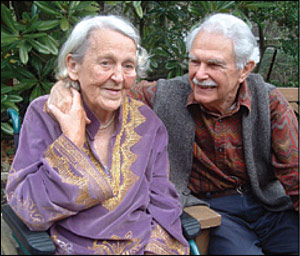
Am Fam Physician. 2007;75(8):1177
When my wife was felled by a stroke six years ago, my life, too, was struck down. Overnight, my active, capable spouse became a paralyzed, speech-impaired invalid, and I, a bookworm and scholar, became nurse and purveyor of a ramshackle household. I could write volumes about what life has been like in these past years. But here I'll just tell one story from our daily struggle as we together have tried to cope with a body that no longer works.

Our last home aide leaves at nine o'clock at night, after helping put my wife to bed. Then it's up to me to get my wife to the commode. Though we try to get by using diapers, once in a while I still do have to get her out of bed. We are both well over 80 and don't have much strength. That explains why, not long ago, as I was lifting her, she slipped from my arms to the floor. What could we do? We began our tussle with gravity, to no avail—I couldn't budge my wife, no matter whether I kneeled, squatted, or bent over her, grabbing her under her arms as I tried to drag her someplace where I could get better support. We finally gave up, looking at each other, not knowing whether to laugh or cry. Then suddenly, I heard a voice, the words of a true friend, a retired nurse who, with her husband, has stayed loyal to us: “You can call us any time, day or night, if you need help.” It was four o'clock in the morning. It was cold outside, and dark. Our friends lived in the neighboring town. Still, I dialed the number. On the other end of the line, a trusty voice answered. “We'll be right over.” Sure enough, my friends arrived and lifted my wife back into bed. We were saved.—e.s., 83
COMMENTARY
For a powerful read on the impact of caring for an aging, ailing relative at home, see Jerald Winakur's “What Are We Going To Do With Dad?”1 Despite the emotional and physical costs, home-based care is preferable to a care facility for many families. In one study assessing the impact on the caregiver of placing a relative in a long-term care facility, depression and anxiety were as high in caregivers after transfer as when the relative lived in the home.2 The death of an ill spouse, studies show, is better tolerated than any form of long-term care.3